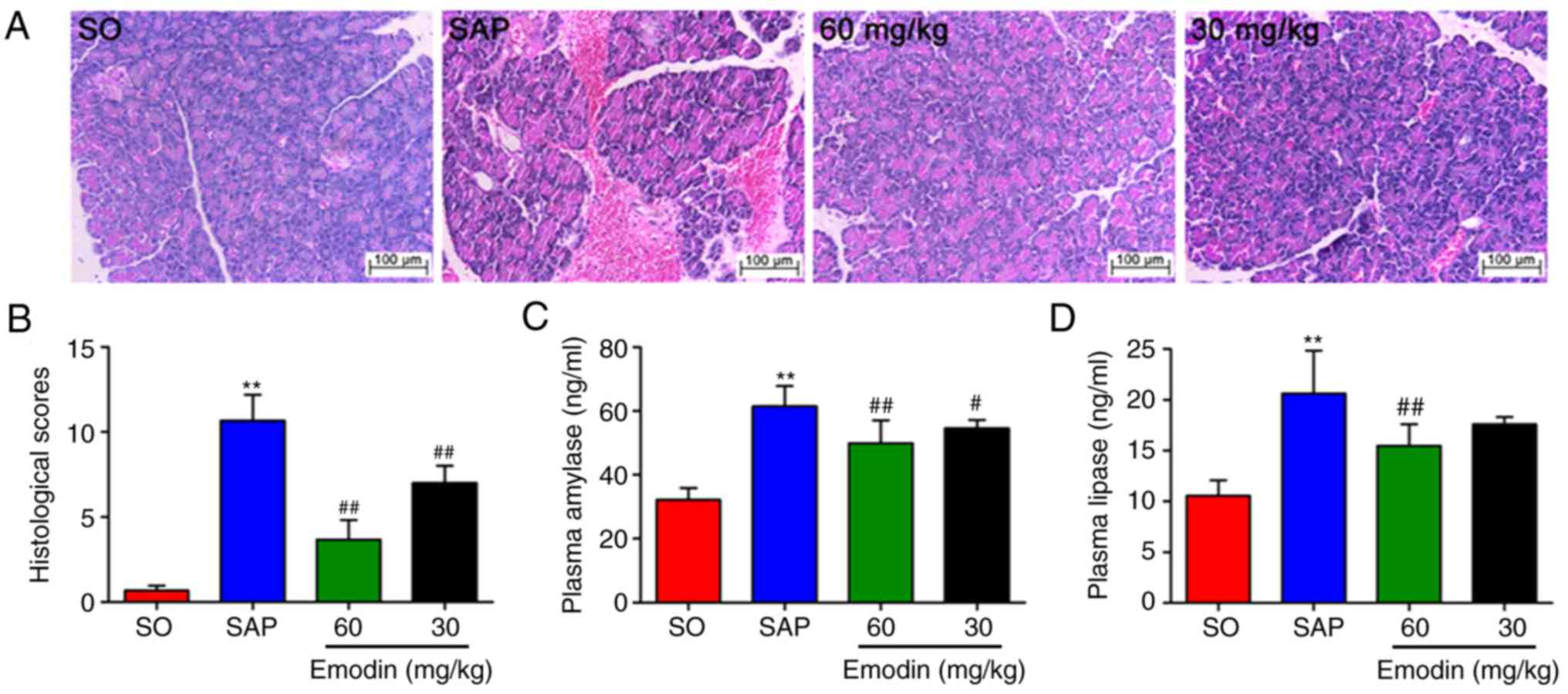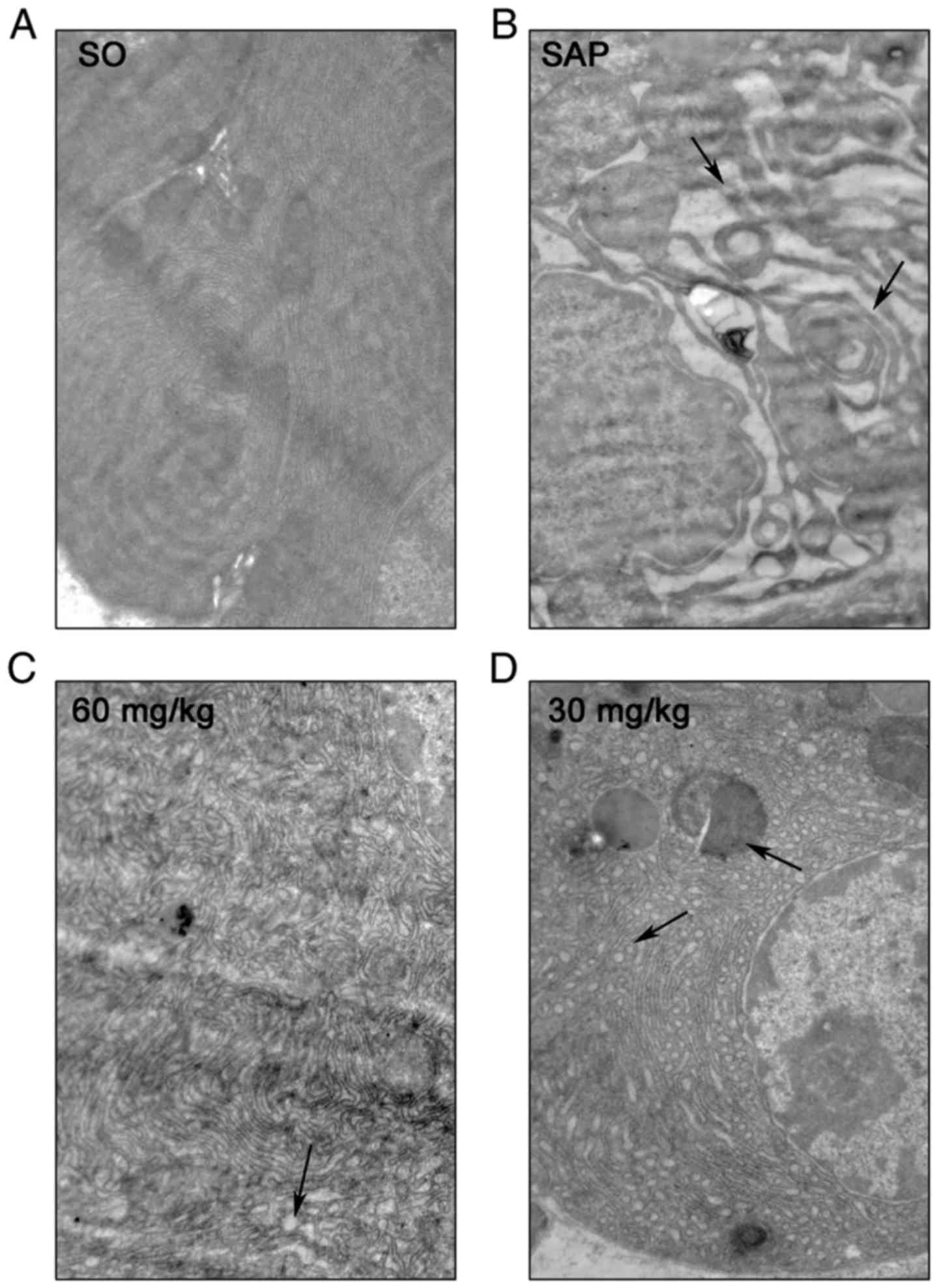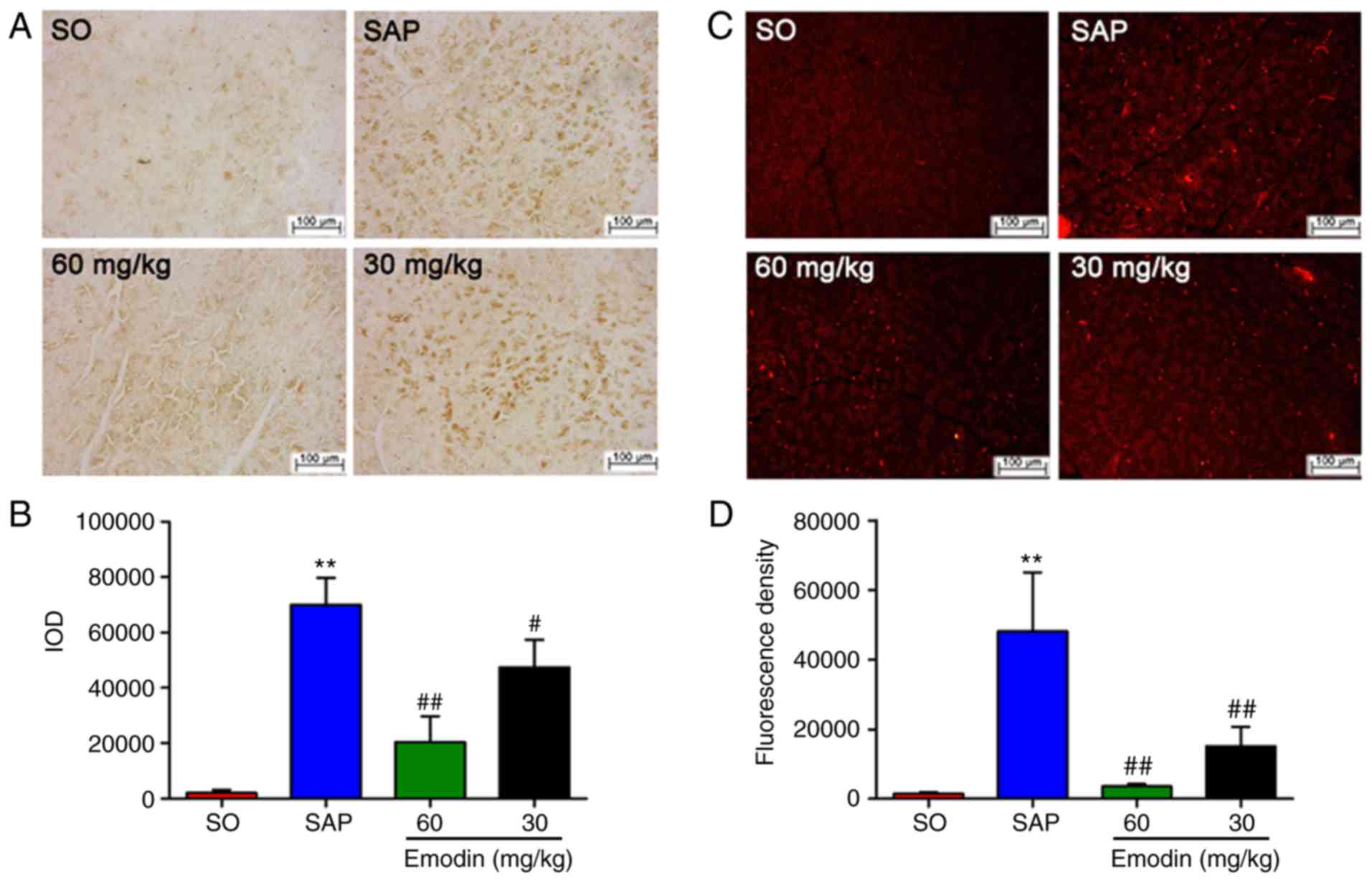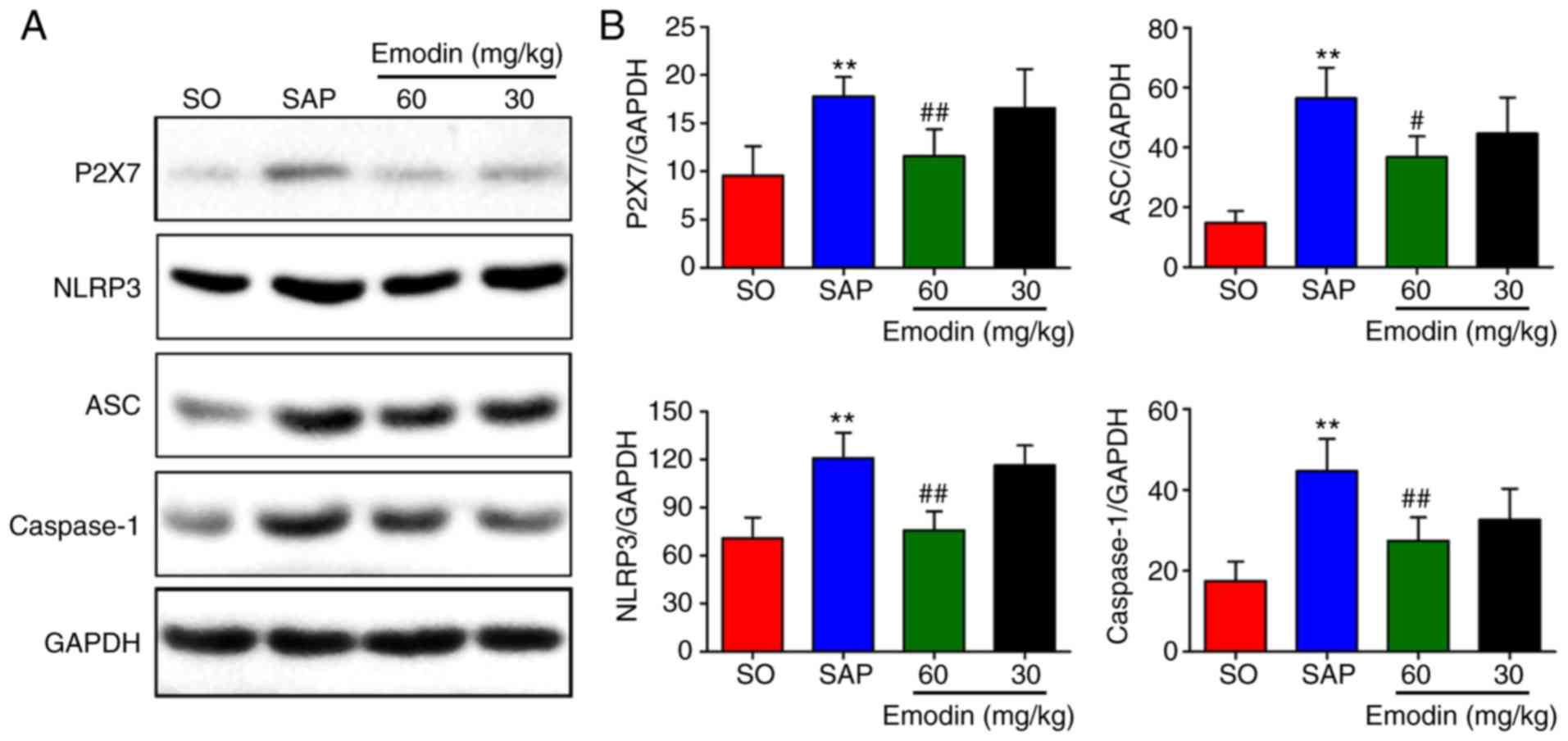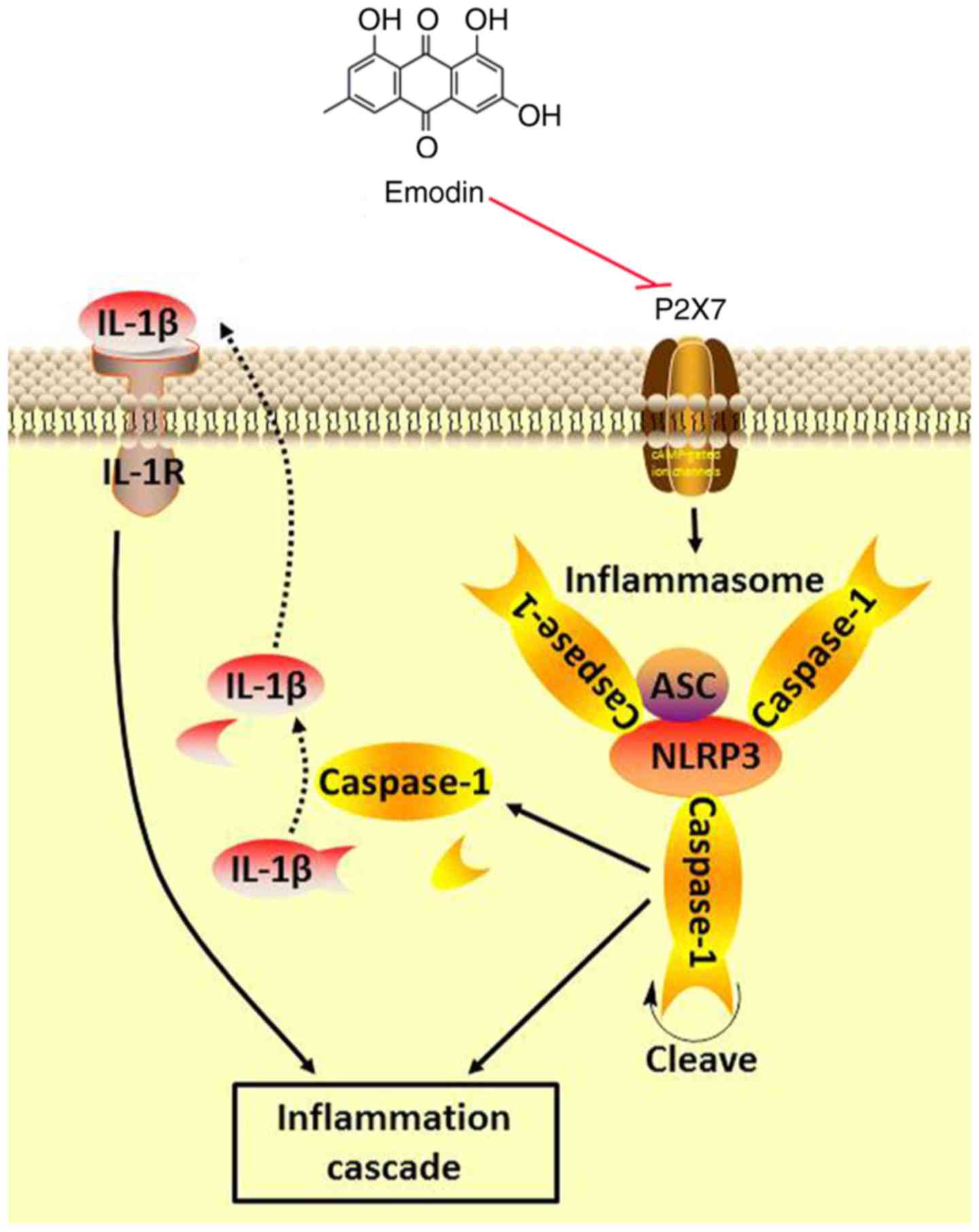|
1
|
Lankisch PG, Apte M and Banks PA: Acute
pancreatitis. Lancet. 386:85–96. 2015. View Article : Google Scholar : PubMed/NCBI
|
|
2
|
Tenner S, Baillie J, DeWitt J and Vege SS:
American College of Gastroenterology: American college of
gastroenterology guideline: Management of acute pancreatitis. Am J
Gastroenterol. 108:1400–1415. 2013. View Article : Google Scholar : PubMed/NCBI
|
|
3
|
Ince AT and Baysal B: Pathophysiology,
classification and available guidelines of acute pancreatitis. Turk
J Gastroenterol. 25:351–357. 2014. View Article : Google Scholar : PubMed/NCBI
|
|
4
|
Yadav D, O'Connell M and Papachristou GI:
Natural history following the first attack of acute pancreatitis.
Am J Gastroenterol. 107:1096–1103. 2012. View Article : Google Scholar : PubMed/NCBI
|
|
5
|
Gillies N, Pendharkar SA, Asrani VM,
Mathew J, Windsor JA and Petrov MS: Interleukin-6 is associated
with chronic hyperglycemia and insulin resistance in patients after
acute pancreatitis. Pancreatology. 16:748–755. 2016. View Article : Google Scholar : PubMed/NCBI
|
|
6
|
Kambhampati S, Park W and Habtezion A:
Pharmacologic therapy for acute pancreatitis. World J
Gastroenterol. 20:16868–16880. 2014. View Article : Google Scholar : PubMed/NCBI
|
|
7
|
Hegazi RA and DeWitt T: Enteral nutrition
and immune modulation of acute pancreatitis. World J Gastroenterol.
20:16101–16105. 2014. View Article : Google Scholar : PubMed/NCBI
|
|
8
|
Banks PA, Bollen TL, Dervenis C, Gooszen
HG, Johnson CD, Sarr MG, Tsiotos GG and Vege SS: Acute Pancreatitis
Classification Working Group: Classification of acute
pancreatitis-2012: Revision of the Atlanta classification and
definitions by international consensus. Gut. 62:102–111. 2013.
View Article : Google Scholar : PubMed/NCBI
|
|
9
|
Zerem E: Treatment of severe acute
pancreatitis and its complications. World J Gastroenterol.
20:13879–13892. 2014. View Article : Google Scholar : PubMed/NCBI
|
|
10
|
Caserta S, Mengozzi M, Kern F, Newbury SF,
Ghezzi P and Llewelyn MJ: Severity of systemic inflammatory
response syndrome affects the blood levels of circulating
inflammatory-relevant MicroRNAs. Front Immunol. 8:19772018.
View Article : Google Scholar : PubMed/NCBI
|
|
11
|
Hoque R, Malik AF, Gorelick F and Mehal
WZ: Sterile inflammatory response in acute pancreatitis. Pancreas.
41:353–357. 2012. View Article : Google Scholar : PubMed/NCBI
|
|
12
|
Giuliani AL, Sarti AC, Falzoni S and Di
Virgilio F: The P2X7 receptor-interleukin-1 liaison. Front
Pharmacol. 8:1232017. View Article : Google Scholar : PubMed/NCBI
|
|
13
|
Zhang GX, Wang MX, Nie W, Liu DW, Zhang Y
and Liu HB: P2X7R blockade prevents NLRP3 inflammasome activation
and pancreatic fibrosis in a mouse model of chronic pancreatitis.
Pancreas. 46:1327–1335. 2017. View Article : Google Scholar : PubMed/NCBI
|
|
14
|
Liu PY, Lee IH, Tan PH, Wang YP, Tsai CF,
Lin HC, Lee FY and Lu CL: P2X7 receptor mediates spinal microglia
activation of visceral hyperalgesia in a rat model of chronic
pancreatitis. Cell Mol Gastroenterol Hepatol. 1:710–720.e5. 2015.
View Article : Google Scholar : PubMed/NCBI
|
|
15
|
Dong X, Fu J, Yin X, Cao S, Li X, Lin L,
Huyiligeqi and Ni J: Emodin: A review of its pharmacology, toxicity
and pharmacokinetics. Phytother Res. 30:1207–1218. 2016. View Article : Google Scholar : PubMed/NCBI
|
|
16
|
Jiang CG: The treatment of acute
pancreatitis with Dachengqi decoction in 32 cases. Zhongguo Wei
Zhong Bing Ji Jiu Yi Xue. 22:2492010.(In Chinese). PubMed/NCBI
|
|
17
|
Yang DY, Duan SB and Aili JT: Effect of
qingyi decoction in treating severe acute pancreatitis and its
impacts on blood level of tumor necrosis factor-alpha,
interleukin-6 and inteleukin-8. Zhongguo Zhong Xi Yi Jie He Za Zhi.
29:1122–1124. 2009.(In Chinese). PubMed/NCBI
|
|
18
|
Wu L, Cai B, Zheng S, Liu X, Cai H and Li
H: Effect of emodin on endoplasmic reticulum stress in rats with
severe acute pancreatitis. Inflammation. 36:1020–1029. 2013.
View Article : Google Scholar : PubMed/NCBI
|
|
19
|
Xia XM, Li BK, Xing SM and Ruan HL: Emodin
promoted pancreatic claudin-5 and occludin expression in
experimental acute pancreatitis rats. World J Gastroenterol.
18:2132–2139. 2012. View Article : Google Scholar : PubMed/NCBI
|
|
20
|
Liu L, Zou J, Liu X, Jiang LH and Li J:
Inhibition of ATP-induced macrophage death by emodin via
antagonizing P2X7 receptor. Eur J Pharmacol. 640:15–19. 2010.
View Article : Google Scholar : PubMed/NCBI
|
|
21
|
Zhu T, Zhang L, Ling S, Duan J, Qian F, Li
Y and Xu JW: Scropolioside B inhibits IL-1β and cytokines
expression through NF-κB and inflammasome NLRP3 pathways. Mediators
Inflamm. 2014:8190532014. View Article : Google Scholar : PubMed/NCBI
|
|
22
|
Rodgers MA, Bowman JW, Fujita H, Orazio N,
Shi M, Liang Q, Amatya R, Kelly TJ, Iwai K, Ting J, et al: The
linear ubiquitin assembly complex (LUBAC) is essential for NLRP3
inflammasome activation. J Exp Med. 211:1333–1347. 2014. View Article : Google Scholar : PubMed/NCBI
|
|
23
|
Han JW, Shim DW, Shin WY, Heo KH, Kwak SB,
Sim EJ, Jeong JH, Kang TB and Lee KH: Anti-inflammatory effect of
emodin via attenuation of NLRP3 inflammasome activation. Int J Mol
Sci. 16:8102–8109. 2015. View Article : Google Scholar : PubMed/NCBI
|
|
24
|
Xiang H, Wang G, Qu J, Xia S, Tao X, Qi B,
Zhang Q and Shang D: Yin-chen-hao tang attenuates severe acute
pancreatitis in rat: An experimental verification of in silico
network target prediction. Front Pharmacol. 7:3782016. View Article : Google Scholar : PubMed/NCBI
|
|
25
|
Cen Y, Liu C, Li X, Yan Z, Kuang M, Su Y,
Pan X, Qin R, Liu X, Zheng J, et al: Artesunate ameliorates severe
acute pancreatitis (SAP) in rats by inhibiting expression of
pro-inflammatory cytokines and Toll-like receptor 4. Int
Immunopharmacol. 38:252–260. 2016. View Article : Google Scholar : PubMed/NCBI
|
|
26
|
Tukaj C, Olewniak-Adamowska A, Pirski MI
and Woźniak M: Ultrastructural aspects of acute pancreatitis
induced by 2, 2′-azobis (2-amidinopropane) dihydrochloride (AAPH)
in rats. Folia Morphol. 71:136–141. 2012.
|
|
27
|
Zhang XP, Li ZF, Liu XG, Wu YT, Wang JX,
Wang KM and Zhou YF: Effects of emodin and baicalein on rats with
severe acute pancreatitis. World J Gastroenterol. 11:2095–2100.
2005. View Article : Google Scholar : PubMed/NCBI
|
|
28
|
Sanz JM, Chiozzi P, Ferrari D, Colaianna
M, Idzko M, Falzoni S, Fellin R, Trabace L and Di Virgilio F:
Activation of microglia by amyloid {beta} requires P2X7 receptor
expression. J Immunol. 7:4378–4385. 2009. View Article : Google Scholar
|
|
29
|
Zhu S, Wang Y, Wang X, Li J and Hu F:
Emodin inhibits ATP-induced IL-1β secretion, ROS production and
phagocytosis attenuation in rat peritoneal macrophages via
antagonizing P2X7 receptor. Pharm Biol. 52:51–57. 2014. View Article : Google Scholar : PubMed/NCBI
|
|
30
|
Xu H, Xiong C, He L, Wu B, Peng L, Cheng
Y, Jiang F, Tan L, Tang L, Tu Y, et al: Trans-resveratrol
attenuates high fatty acid-induced P2X7 receptor expression and
IL-6 release in PC12 cells: Possible role of P38 MAPK pathway.
Inflammation. 38:327–337. 2015. View Article : Google Scholar : PubMed/NCBI
|
|
31
|
Chen Q, Wu H, Qin S, Liu C, Chen Y, Yang Y
and Xu C: The P2X7 receptor involved in gp120-induced cell injury
in BV2 Microglia. Inflammation. 39:1814–1826. 2016. View Article : Google Scholar : PubMed/NCBI
|
|
32
|
Albalawi F, Lu W, Beckel JM, Lim JC,
McCaughey SA and Mitchell CH: The P2X7 receptor primes IL-1β and
the NLRP3 inflammasome in astrocytes exposed to mechanical strain.
Front Cell Neurosci. 11:2272017. View Article : Google Scholar : PubMed/NCBI
|
|
33
|
Yue N, Huang H, Zhu X, Han Q, Wang Y, Li
B, Liu Q, Wu G, Zhang Y and Yu J: Activation of P2X7 receptor and
NLRP3 inflammasome assembly in hippocampal glial cells mediates
chronic stress-induced depressive-like behaviors. J
Neuroinflammation. 10:1022017. View Article : Google Scholar
|
|
34
|
Martinon F, Burns K and Tschopp J: The
inflammasome: A molecular platform triggering activation of
inflammatory caspases and processing of proIL-beta. Mol Cell.
10:417–426. 2002. View Article : Google Scholar : PubMed/NCBI
|
|
35
|
Yan Y, Jiang W, Liu L, Wang X, Ding C,
Tian Z and Zhou R: Dopamine controls systemic inflammation through
inhibition of NLRP3 inflammasome. Cell. 160:62–73. 2015. View Article : Google Scholar : PubMed/NCBI
|
|
36
|
Slowik A, Lammerding L, Zendedel A, Habib
P and Beyer C: Impact of steroid hormones E2 and P on the
NLRP3/ASC/Casp1 axis in primary mouse astroglia and BV-2 cells
after in vitro hypoxia. J Steroid Biochem Mol Biol. 183:18–26.
2018. View Article : Google Scholar : PubMed/NCBI
|
|
37
|
Li X and Zhong F: Nickel induces
interleukin-1β secretion via the NLRP3-ASC-caspase-1 pathway.
Inflammation. 37:457–466. 2014. View Article : Google Scholar : PubMed/NCBI
|
|
38
|
Zhang A, Pan W, Lv J and Wu H: Protective
effect of amygdalin on LPS-induced acute lung injury by inhibiting
NF-κB and NLRP3 signaling pathways. Inflammation. 40:745–751. 2017.
View Article : Google Scholar : PubMed/NCBI
|
|
39
|
Hansen MR, Krabbe S and Novak I:
Purinergic receptors and calcium signalling in human pancreatic
duct cell lines. Cell Physiol Biochem. 22:157–168. 2008. View Article : Google Scholar : PubMed/NCBI
|
|
40
|
Novak I, Nitschke R and Amstrup J:
Purinergic receptors have different effects in rat exocrine
pancreas. Calcium signals monitored by fura-2 using confocal
microscopy. Cell Physiol Biochem. 12:83–92. 2002. View Article : Google Scholar : PubMed/NCBI
|
|
41
|
Lu G, Tong Z, Ding Y, Liu J, Pan Y, Gao L,
Tu J, Wang Y, Liu G and Li W: Aspirin protects against acinar cells
necrosis in severe acute pancreatitis in mice. Biomed Res Int.
2016:60894302016. View Article : Google Scholar : PubMed/NCBI
|
|
42
|
Novak I, Jans IM and Wohlfahrt L: Effect
of P2X7 receptor knockout on exocrine secretion of
pancreas, salivary glands and lacrimal glands. J Physiol.
588:3615–3627. 2010. View Article : Google Scholar : PubMed/NCBI
|
|
43
|
Schroder K and Tschopp J: The
inflammasomes. Cell. 140:821–832. 2010. View Article : Google Scholar : PubMed/NCBI
|
|
44
|
de Torre-Minguela C, Mesa Del Castillo P
and Pelegrín P: The NLRP3 and pyrin inflammasomes: Implications in
the pathophysiology of autoinflammatory diseases. Front Immunol.
8:432017. View Article : Google Scholar : PubMed/NCBI
|
|
45
|
Gunjaca I, Zunic J, Gunjaca M and Kovac Z:
Circulating cytokine levels in acute pancreatitis-model of
SIRS/CARS can help in the clinical assessment of disease severity.
Inflammation. 35:758–763. 2012. View Article : Google Scholar : PubMed/NCBI
|
|
46
|
Wang XY, Tang QQ, Zhang JL, Fang MY and Li
YX: Effect of SB203580 on pathologic change of pancreatic tissue
and expression of TNF-α and IL-1β in rats with severe acute
pancreatitis. Eur Rev Med Pharmacol Sci. 18:338–343.
2014.PubMed/NCBI
|
|
47
|
Wen H, Miao EA and Ting JP: Mechanisms of
NOD-like receptor-associated inflammasome activation. Immunity.
39:432–441. 2013. View Article : Google Scholar : PubMed/NCBI
|
|
48
|
Xu MH, Yuan FL, Wang SJ, Xu HY, Li CW and
Tong X: Association of interleukin-18 and asthma. Inflammation.
40:324–327. 2017. View Article : Google Scholar : PubMed/NCBI
|
|
49
|
Xiang H, Tao X, Xia S, Qu J, Song H, Liu J
and Shang D: Emodin alleviates sodium taurocholate-induced
pancreatic acinar cell injury via MicroRNA-30a-5p-mediated
inhibition of high-temperature requirement A/Transforming growth
factor beta 1 inflammatory signaling. Front Immunol. 8:14882017.
View Article : Google Scholar : PubMed/NCBI
|



